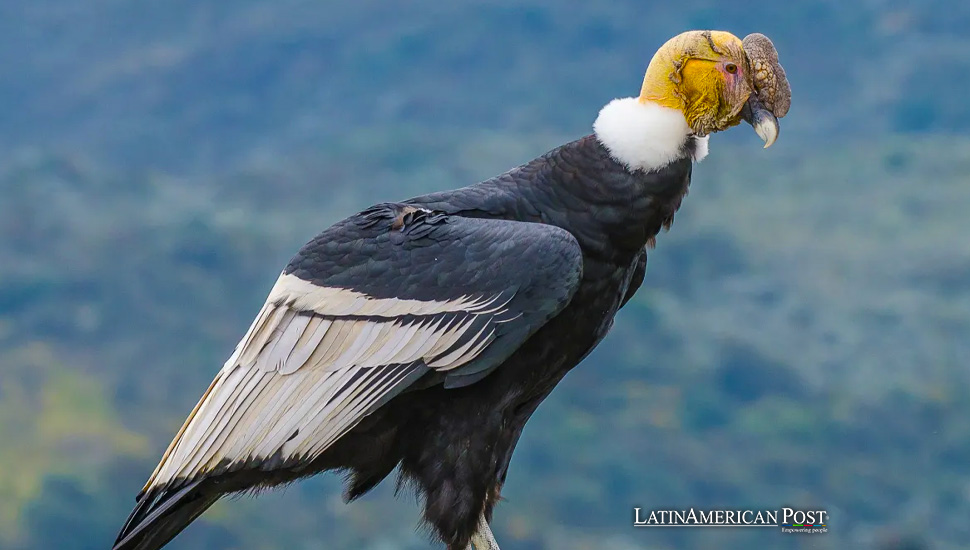Chile’s Ambitious Effort to Reintroduce Andean Condors and Revive the Skies with this Majestic Creature

In a significant conservation effort, scientists and zoologists in Chile have released four Andean condors into the wild as part of Project Manku, aiming to restore one of South America’s most iconic species to its natural habitat amidst regional environmental challenges.
A Majestic Moment Unfolds
In the southern reaches of Chile, within the breathtaking expanses of Patagonia National Park, a groundbreaking moment unfolded as four majestic Andean condors spread their wings toward freedom. This event marks a critical milestone in ‘Project Manku,’ an ambitious conservation initiative spearheaded by scientists and zoologists from seven organizations, including the Union of Chilean Ornithologists, Philanthropy Cortés Solari, Rewilding Chile Foundation, the Center for the Rehabilitation of Birds of Prey (CRAR), the Agricultural and Livestock Service (SAG), the Parquemet Zoo, and the National Forestry Corporation (Conaf). The project’s name, Manku, resonates with the profound cultural significance of these birds, echoing through the ages in the tapestry of South American heritage.
The release, detailed in a statement to EFE, unfolded in the pristine landscapes of Patagonia National Park, located in the Aysén region, a testament to Chile’s commitment to environmental preservation and species recovery. Among the released condors were Bagual and Chicoco, rescued and rehabilitated at CRAR, alongside Cuyén and Eclipse, born in captivity within the same facility. These birds, symbols of Andean culture, underwent rigorous medical examinations before their transfer from CRAR in Talagante to their new home in Patagonia, embarking on a two-month acclimatization process in a pre-release enclosure to prepare them for life in the wild.
Facing Challenges: Andean Condors in Chile
Chile’s Andean condor population, central to the nation’s ecological and cultural identity, faces pressing challenges. With two significant population centers in central Chile and Patagonia, the latter hosting 70% of the population, conservation efforts are imperative. The contrast between the densely populated central region and the pristine environments of Patagonia underscores the varied challenges of condor conservation, from human encroachment to habitat degradation.
The reintroduction of these condors is not just a local endeavor but part of a broader struggle against environmental threats facing Latin America. With its rich biodiversity, the continent is at a crossroads, grappling with deforestation, wildfires, and climate change. Similar initiatives across Latin America, from the Amazon to the Andean highlands, reflect a growing awareness and commitment to preserving the region’s iconic wildlife. Countries like Brazil, Argentina, and Bolivia have launched their conservation projects, aiming to protect species such as the jaguar, the green macaw, and the Andean bear, illustrating a collective movement towards environmental stewardship.
The collaborative effort behind Project Manku, bringing together public and private sectors, highlights the importance of unity in facing environmental challenges. The release of these condors, equipped with GPS trackers for monitoring, symbolizes a step forward in understanding and conserving the species. It also serves as a poignant reminder of the impact of human activity on wildlife, urging a reevaluation of our relationship with nature.
Project Manku’s Success and Regional Cooperation
Since 2014, Project Manku has released 15 Andean condors, with this initiative providing invaluable data on their habitat and behaviors, crucial for the species’ long-term survival. The project’s success in Chile and its implications for cross-border conservation efforts, particularly with Argentina, showcases the potential for regional cooperation in preserving South America’s natural heritage.
Also read: Colombia Bolsters Firefighting Arsenal With Drug Crop Fumigation Planes Amid El Niño
As these Andean condors take to the skies, their flight embodies hope and resilience. It’s a testament to the power of collective action in confronting environmental challenges and inspiring future conservation efforts across Latin America and beyond. The story of Project Manku and the release of these condors in Chile’s Patagonia is not just about saving a species; it’s about rekindling a relationship with the natural world, a journey of renewal and respect that transcends borders.





